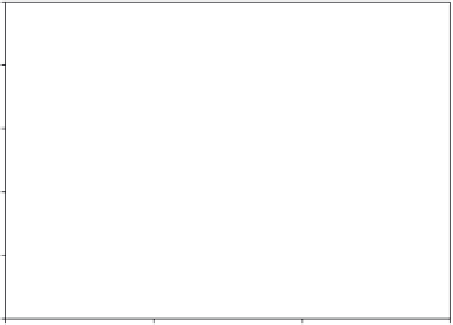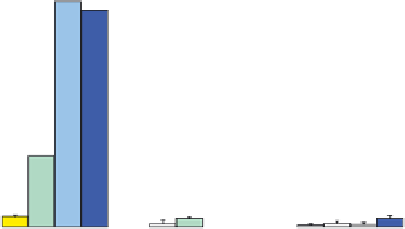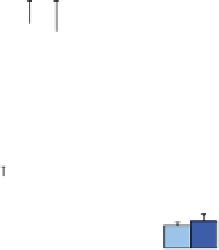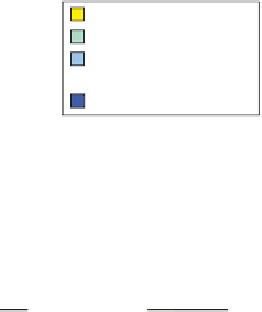Biomedical Engineering Reference
In-Depth Information
CC30 (Akzo Nobel Chemicals) (Bindzil). Because it was not possible to provide
NANOCRYL XP 21/0768 as a pure material, it was only tested as part of the lacquer
matrix. As described previously, Axilat silica induced inflammatory responses in
mice 24 h after intratracheal instillation of 54 µg/mouse, whereas no inflammation
was observed for Bindzil in the same test setup (Saber et al. 2012a). No toxicity was
detected when Axilat was encapsulated in a binder matrix. Only sanding dust par-
ticles from the lacquers with and without Bindzil as well as the outdoor acrylic-based
reference paint resulted in statistically significant increased level of DNA damage in
the bronchoalveolar lavage cells when compared to the vehicle. This indicates that
the acute toxicity of total emitted sanding dust of these paints and lacquer types is
controlled by the paint matrix rather than the added fillers and nanomaterials, at
least when low toxic nanofillers are used.
This hypothesis of matrix effects was further supported by an in vivo study spe-
cifically investigating this question using the inflammogenic and DNA-damaging
nanofiller (UV Titan L181) (Saber et al. 2012a) and sanding dusts from the cor-
responding paints with 10 wt% UV-Titan L181 (Indoor-NanoTiO
2
) and a reference
paint (Indoor-R) (Saber et al. 2012b). The instilled doses were adjusted so that the
doses of the UV Titan L181 nanopaint sanding dust (54, 162, and 486 µg/mouse)
would contain approximately the same amount of UV Titan L181 as the pure MN
reference test (18, 54, and 162 µg/mouse). As shown in Figure 17.3, the results showed
no additive effect when UV-Titan L181 was added to the paint when compared to the
reference paint for any of the measured toxicological endpoints at 1, 3, and 28 days
after instillation (Saber et al. 2012b). However, for paints with more less-durable
2.5E + 05
0 µg
54 µg nano TiO
2
486 µg paint without
nano TiO
2
486 µg paint with TiO
2
***
***
2.0E + 05
1.5E + 05
1.0E + 05
***
5.0E + 04
***
***
**
0.0E + 00
1
3
28
Days after instillation
FIGURE 17.3
Neutrophil influx in the lungs of mice after exposure to a low and high dose
of UV-Titan L181 (nanoTiO
2
) as well as sanding dusts from an acryl reference paint and acryl
paint with added nanoTiO
2
. The symbols *, **, and *** illustrate that the results are statisti-
cally significantly different when compared to effect levels in control mice at the 0.5, 0.01,
and 0.001 level, respectively. (Data originates from Saber, A.T. et al.,
Nanotoxicology,
6,
776 -788, 2012c.)




Search WWH ::

Custom Search